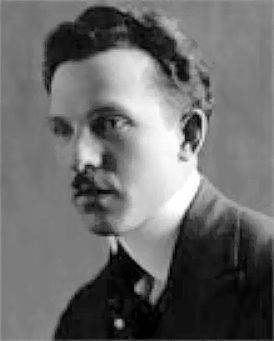Name Anton Grot | Years active 1916-1950 Role Film Art Director | |
 | ||
Full Name Antocz Franziszek Grozewski Nominations Academy Award for Best Production Design Similar People Sol Polito, Max Ree, Ernest Haller, Leo F Forbstein, Tony Gaudio | ||
Anton Grot (18 January 1884 – 21 March 1974) was a distinguished Polish art director long in Hollywood. He was known for his prolific output with Warner Brothers, contributing, in such films as Little Caesar, and Gold Diggers of 1933 to the distinctive Warners look and style. According to TCM.com, he showed a "flair for harsh realism, Expressionistic horror and ornate romantic moods alike". He was born Antocz Franciszek Groszewski in Kielbasin, Poland and died in Stanton, California. He studied at the Krakow art academy and at technical school in Koenigsberg, Germany, majoring in interior decoration, illustration, and design. He changed his name and emigrated to the U.S. in 1909.
The Lubin Company hired him to paint and design sets in 1913, in Philadelphia; and he also worked on films for Vitagraph and Pathe. At Pathe he developed his innovative techniques, along with William Cameron Menzies, in the way of using continuity sketches. His method of presenting a series of sketches of all the film’s sets would later become standard practice among Art Directors, particularly with Menzies (his assistant in 1917, on The Naulahka). Cinematographer Arthur Miller remembered Anton Grot:
“a gifted and talented artist who made beautiful charcoal drawings...of the set before it was completed. All his compositions showed a full shot of each set, with all the delicate tones and shadings that suggested ideas for lighting and, in general, were of great help to me as a cameraman.”
Grot came to Hollywood in 1922 to assist Wilfred Buckland with the sets for the Douglas Fairbanks Robin Hood; and stayed on, to work with Cecil B. DeMille and William K. Howard. He was eventually signed by Warner Bros, as “art director, artist, and designer", and designed 80 films before his retirement in 1948. Grot collaborated notably with fellow emigre, director Michael Curtiz, on 15 films. Beginning with the biblical epic Noah’s Ark (1928), these included The Private Lives of Elizabeth and Essex (1938), Captain Blood (1935), The Sea Hawk (1940), and Mildred Pierce (1945). Grot is credited with contributing significantly to Curtiz’ personal style.
Awards
Grot was nominated for five Academy Awards for Best Art Direction:
He received a special Oscar in 1941 for inventing a water ripple and wave-illusion machine, first used in The Sea Hawk (1940).
